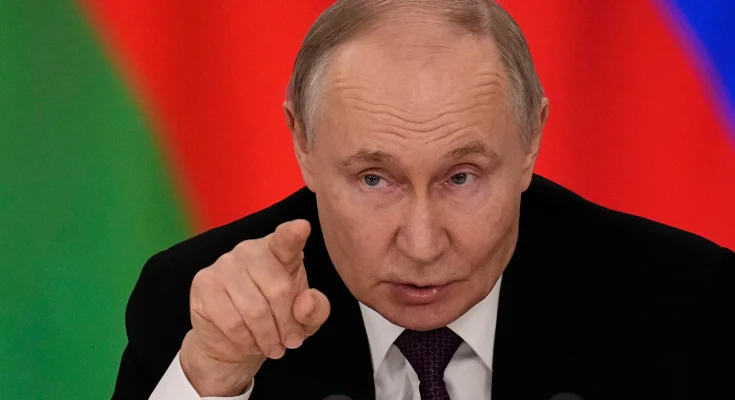Classified U.S. intelligence reports, including one earlier this month, cast doubt on Vladimir Putin’s willingness to end the war against Ukraine, assessing that the Russian president has not veered from his maximalist goal of dominating his western neighbor, according to people familiar with the analysis.
Other officials said the reports were more cautious on what peace terms Putin might accept. But they acknowledged that there is no sign Putin has relented in his demand that Ukraine be brought into Russia’s security and economic orbit. “He has a long-standing desire to restore ‘Mother Russia,’” one official said.
“I don’t believe a ceasefire or even a truce or a treaty will be an end to the story,” said Eugene Rumer, a former U.S. intelligence official and Russia expert at the Carnegie Endowment for International Peace. “This is the new permanent standoff between Russia and the rest of Europe.”
Other analysts said they thought the talks could yield a positive outcome if Washington and Europe play their cards right.
“For Putin to stop fighting, he has to think he can win in a negotiation,” said Eric Ciaramella, who is also a former U.S. intelligence official and Russia expert at Carnegie. “But that doesn’t mean he will win. The key to making a favorable and lasting ceasefire deal will be setting up security arrangements for Ukraine that would allow it to rebuild its military strength and deter a renewed attack.”
Some of the U.S. assessments on Putin’s intransigence have appeared to irk Trump, another person familiar with the matter said. Indeed, Trump and his aides in recent days have raised the prospect of stiff new sanctions on Russia if it refuses to agree to end the war. They have not specified what those sanctions would be, though Trump on Wednesday said they “could be devastating.”
“The president desperately wants a deal,” the person said. “And the Russians are showing no signs of relenting. They’re ramping up their demands.”
Trump cut off U.S. military and intelligence aid to Ukraine last week to prod Zelensky to engage in peace talks. Once the agreement in Saudi Arabia was reached, Washington said it was lifting the prohibition on arms and intelligence.
Russia, which seized and annexed the Crimean Peninsula in 2014 before launching a full-scale invasion in 2022, controls about 20 percent of Ukrainian territory and illegally annexed four eastern provinces near Russia’s borders. Ukrainian officials say they want to restore the totality of the country’s pre-2014 borders, although many officials and analysts say it is unlikely to regain Crimea through diplomacy or force.
The contours of an eventual territorial settlement are unclear. Russian Foreign Minister Sergei Lavrov last month briskly rejected a French-British proposal for European peacekeeping troops to deploy to Ukraine to safeguard any peace agreement.
Throughout President Joe Biden’s tenure, U.S. spy chiefs said publicly that they saw no sign the Russian leader had scaled back his aims for Ukraine, despite significant military setbacks in the months after Russia invaded in February 2022.
Putin’s calculations could change if his military situation begins to deteriorate, the former official said. While much larger and more populous than Ukraine, Russia has seen more than 95,000 of its soldiers killed in the past three years, according to a BBC analysis. Some estimates put the total of killed and wounded near 500,000.
Those means include economic and diplomatic coercion; penetrating Ukrainian elites, business circles, security services and the military; and exerting influence through the Russian church in Ukraine, the official said. Russia’s leaders have long painted Zelensky as a puppet of the West and tried to undermine his legitimacy.
“The 2022 invasion happened because the hybrid tools did not bring results,” the European official said.
Russia has stepped up its use of hybrid techniques in Europe in recent years, attempting an assassination of the CEO of a German arms maker, carrying out arson in Britain and other European countries, and meddling in elections in Moldova.

